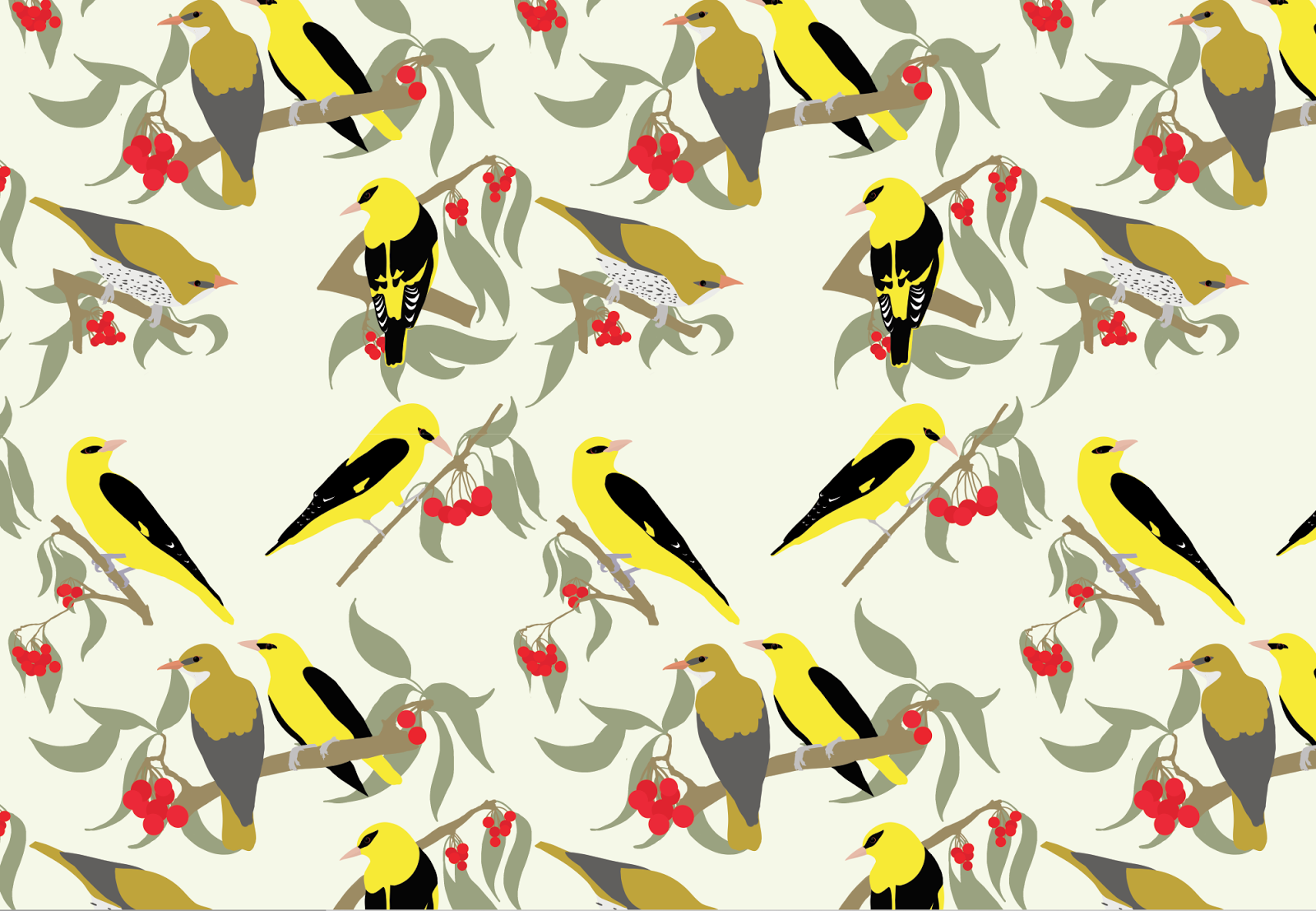CONCEPT: Blog entry 39
For this one, I actually found out how to make a proper repeating pattern - as a result, it works much better. It's not as nicely finished as I'd like (I've been at this all day, I'm packing up after this post) the leaves look horrid, I'll have to find a better way to do these next time, but for today I just wanted to see if I could do this.
[This is the tutorial I followed to make my pattern]
 |
| Experimentation with pattern in Photoshop - Marsh Tit |
 |
| Experimentation with pattern in Photoshop - Marsh Tit detail |
Another part of the plan, was to make the pattern relate to the birds habitat, which I haven't done here (time, and I'm just fannying around), I did try to do this more with my previous pattern with the lapwings (showed it's nest, tried to convey the idea of water etc.) with the smaller birds I'm thinking of using the trees that they like to hang out in... and it will generally flow better when I have them all together (it will be more obvious what I'm doing, I hope, anyway) for instance, the wader birds will be around water, on sand, marshes. Game birds (capercallie, grey partridge etc.) will be on the ground, autumnal colours and leaves, and the smaller birds will have their favourite trees (foods, berries etc.) I just think its a more interesting way to show the birds habitat that the traditional images found in these kinds of books.
I really like this idea...but, how is it relevant to the RSPB Red List? Why should it be a pattern?
Well; (a couple of ideas..)
- Patterns are fashionable, a way to appeal to a wider audience
- Book could link to a website, where can buy things with that print on, with a portion of the proceeds going to the RSPB (I have other ideas for a website too, later though).
(Although these two ideas are making it very female orientated - can you make a butch pattern??)
I'm just thinking of trying to do something different with the illustrations! As my research yesterday proved, there are so many arty bird books, full of very similar looking pretty water colours of birds and animals - I need to find something different to make mine stand out.
___________________________
I've been thinking about what I might put in my PPF...and what I will actually be making. Right now, I'm thinking it will be a book (on the Red List, obvs). I want the book be a combination of the two main types of bird books; the species guide and the arty coffee table book, with a wide audience appeal. I want it to provide information on the Red List and the individual species, like the species guide, but I also want it to have the appeal of the coffee table books.
I've also been thinking that this book can then link to website; the website will have a couple of features,
- More info on each species (sound clips, photos)
- Sighting maps that can be added too - can see where the birds of the Red List have been spotted
- Shop! for the patterns, proceeds going to the RSPB
There is much more work to be done on this...but my idea is coming together! (Its about bloody time too!)













































.jpg)
.jpg)
.jpg)
.jpg)
.jpg)